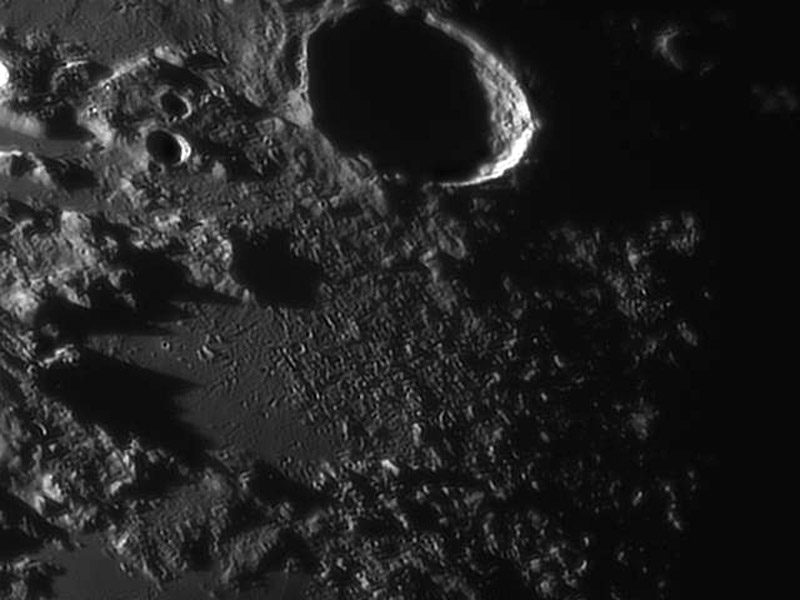August 30, 2012
Alex's Alexander

image by Alex Sanz, Ayllon, Spain
Alexander was truly great, but his crater hardly merits a name. It exhibits a common failure of many older craters - it is missing nearly half of its rim. Where do rims go? Imbrium lacks a western and a northern rim, and at a smaller scale Alexander has lost its northeastern boundary. The eastern floor of Alexander is covered by rubbly hills, presumably ejecta from both the Imbrium and Eudoxus (top center) impacts. The ejecta did not bury the rim and probably didn’t pound it into oblivion. On the south side the rim slowly gets lower, but on the north the rim abruptly stops – what accounts for these differences? Some craters, such as Iridum and the one around the Straight Wall, have apparently been faulted down into a subsiding basin, but that isn’t the case for Alexander. So what explanation do you have for Alex’s missing rim?
Chuck Wood
Technical Details
8th august 2012 04:54 U.T. C11 at f/30, DMK 31 at 27 fps + red filter; seeing was below average ( 6/10).
Related Links
Rükl plate 13
More of Alex's images
Yesterday's LPOD: Winking At the Moon
Tomorrow's LPOD: Moon Over New Zealand
COMMENTS?
Register, Log in, and join in the comments.



